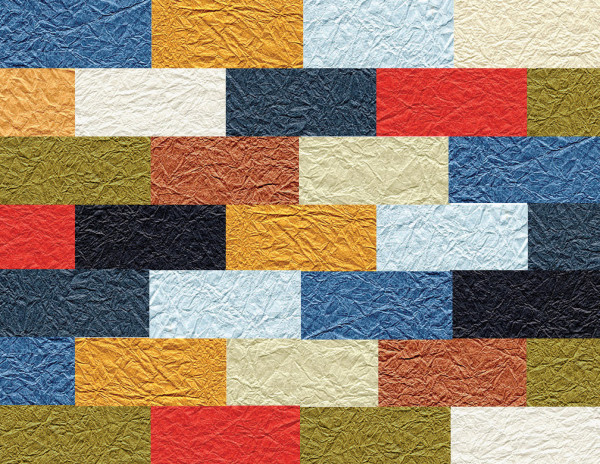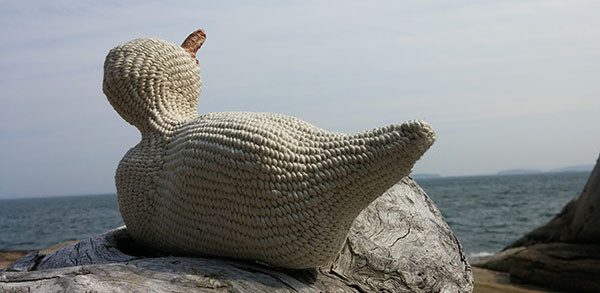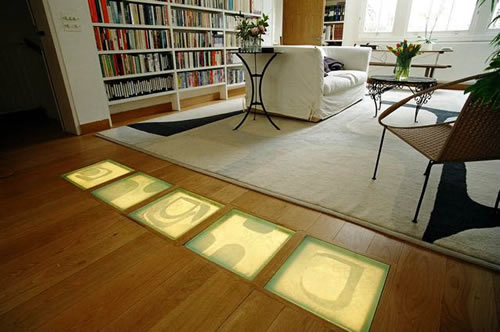Can you say Kyoseishi?
The Sunday Paper #60
Featured Paper of the Week:: Kyoseishi from Washi Arts
In the early 1990’s I was determined to go to Japan to learn all about papermaking (I even took Japanese lessons). But alas, I ended up learning all about Western papermaking at Dieu Donné Papermill in NYC (not a bad alternative)! I am still waiting for that visit to Japan, but in the meantime I’m thankful that there are now Japanese paper suppliers in North America, such as Washi Arts, a partner of the Toronto-based The Japanese Paper Place – the world’s largest supplier of fine Japanese Papers under one roof.
Kyoseishi (kee oh ‘say shi) is a crinkle-texture Japanese paper that has a cloth like drape. This paper is treated with konnyaku* which gives it added strength and water resistance. It is great for making book covers and even clothing and comes in a variety of rich colors. Washi Arts carries a premium hand-crumpled Kyoseishi paper (some papers have the crinkle texture applied by machine) that measures 25″ x 37″.
Washi Arts is offering a 15% discount through June 30, 2015. Just enter SUNDAY2015 at check out.
Here’s a pinterest board with examples of how artists and artisans are using Kyoseishi.
* Konnyaku starch, processed from the tuberous root of the devil’s tongue plant, was traditionally used in Japan to produce a jelly‐like substance used in food. It has also been used for centuries to coat papers, especially for use in the making of kamiko paper clothing. Paper treated with konnyaku called momigami (kneaded paper) or kyoseishi (strong paper) is made both stronger and more flexible than untreated paper. Because the paper’s pores are coated it also becomes more wind and water‐resistant as well as having improved heat retention while still remaining breathable. As a lining for clothing momigami has often outlasted the textile that it lines. You can order konnyaku powder through Washi Arts too.—————————————————————————————————————————————
In the Studio: I love designing with paper, and based on what I see around the internet and the world, there are truly endless possibilities. Most of you know that I write how-to books. I’m on how-to book writing hiatus at the moment, but that doesn’t mean I’m not designing new paper projects. Here’s the latest – a how-to guide for making this Woven Paper Lantern.
Fair warning – it isn’t free – but they say the best things in life aren’t free, don’t they?
—————————————————————————————————————————————
Aimee Lee recently wove as many paper ducks as her hands could handle while at Haystack Mountain School’s Open Studio Residency (this picture was taken at Haystack, on the Maine coast). Aimee is an expert in Korean hand papermaking traditions (that duck features corded and hand woven handmade paper)! Click to read more about Aimee’s research, her classes and her book about Korean papermaking traditions.
I was delighted when a reader sent me this link to Translucides Paper Creation Studio. Check out these luminous tiles made by embedding Japanese papers in resin and glass. Wowza!
It’s a week of paper animals… bah! Paper usually isn’t considered permanent or durable, but when you think about it, it has been around for a really long time! I love it when artists can make the case for using it in public art. It does have some exceptional attributes – the fact that it is light weight is one. Artist Kyu Seok Oh’s herd of 10, cast with handmade paper, supported with steel, and coated to resist rain, are in their element amid the garden’s grasses near Chinatown Park in Boston.
This is a lovely video of the paper cut work of Jacky Cheng. She creates shapes and patterns that become incredibly complicated paperscapes over time.
This 3D printed paper battery inspired by origami (it folds into a stackable, paper device) is getting a lot of attention (and funding). Seokhun “Sean” Choi, a researcher at Binghampton University in New York, has woven origami and energy together in a super eco-friendly new medium for energy that may serve as a great device out in the field.
————————————————————————————————————––––––————
If you enjoyed reading The Sunday Paper today, why not sign up to get it delivered to your in-box each and every Sunday? Click here to subscr
ibe, and you’ll receive my nifty pop-up alphabet template as a thank you gift!
 If you read this blog regularly, would you consider making a donation to support the research, writing, design and delivery of The Sunday Paper? Click on that cute paper button (I made that paper) to see how you can provide support. And if you run a paper-related business, you might be interested in promoting your business in The Sunday Paper.
If you read this blog regularly, would you consider making a donation to support the research, writing, design and delivery of The Sunday Paper? Click on that cute paper button (I made that paper) to see how you can provide support. And if you run a paper-related business, you might be interested in promoting your business in The Sunday Paper.
Thank you to those who have pledged your support, and enjoy your Sunday!
————————————————————————————————————––––––––––––
About Our Paper of the Week Sponsor
Washi Arts exclusively carries the exquisite papers made by tradtional Japanese paper makers as well as Japanese tools and supplies for working with washi. Washi Arts is a partner of Toronto-based The Japanese Paper Place – the world’s largest supplier of fine Japanese Papers under one roof. They have been providing knowledge and inspiration to creative enterprises around the world since 1982. Get daily creative inspiration and see what artists, architects, designers, calligraphers, binders and conservators are doing with washi on instagram, facebook, and twitter.
Special thanks to Washi Arts for sponsoring this post and for their contribution to the world of handmade paper!





